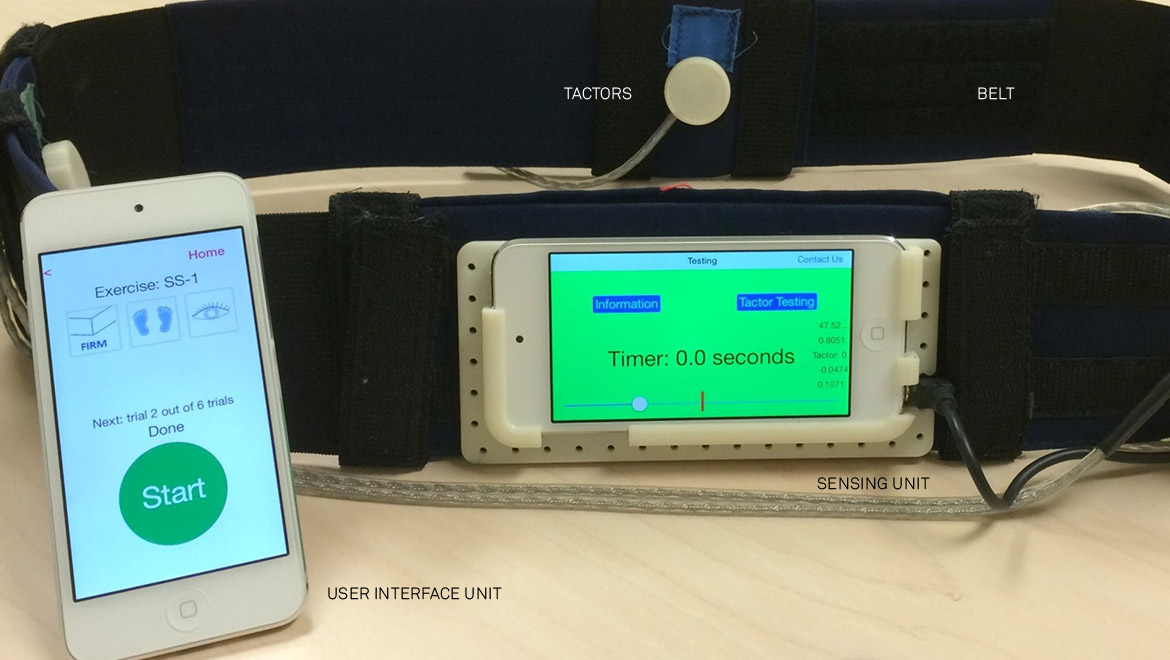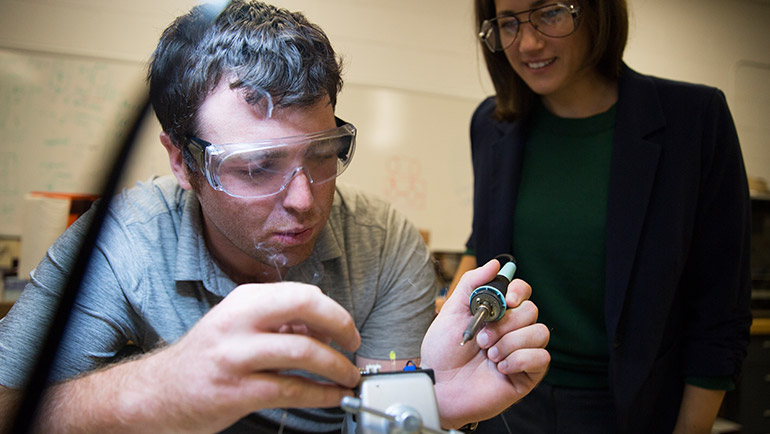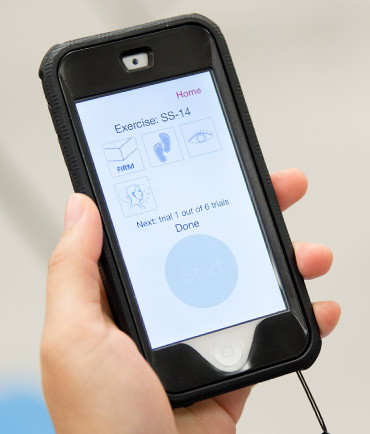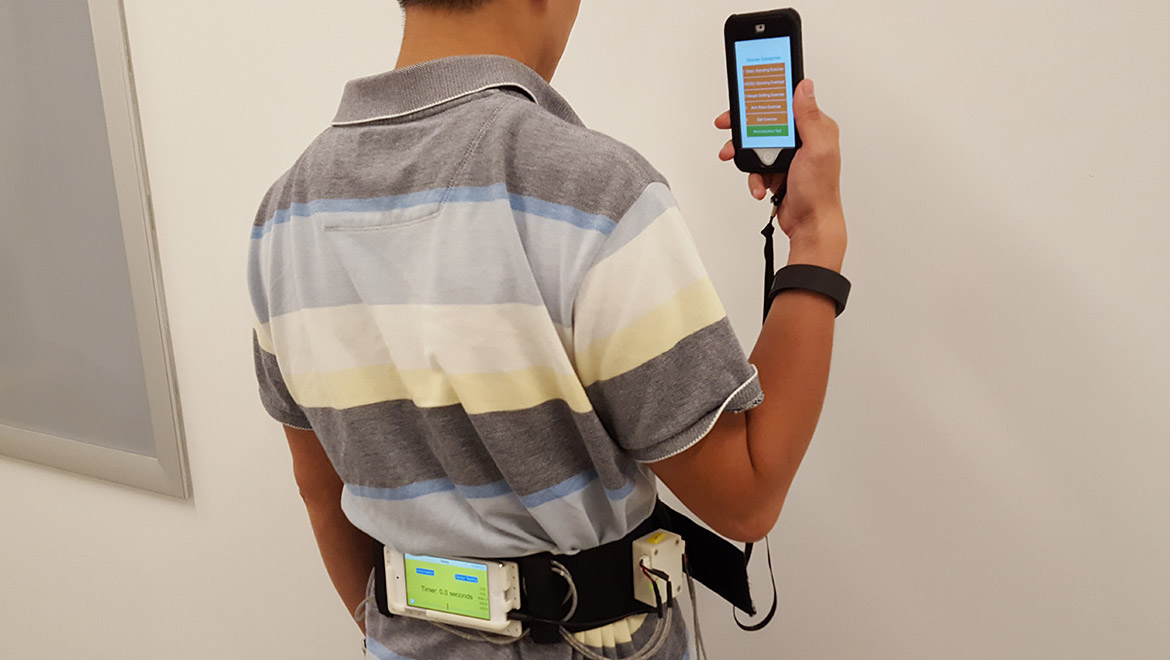Laboratory-based vibrotactile biofeedback systems are impractical for use in home balance rehabilitation regimens due to their cost, size and complexity. We believe that wider, easier, and cheaper use of vibrotactile feedback devices can be achieved by exploiting the newest technologies. With powerful processors, considerable memory capacity, and embedded accurate motion sensors (accelerometers and gyroscopes), smartphones make themselves ideal candidates as a portable vibrotactile biofeedback systems. Using design ethnography techniques including observations and interviews during a co-creative design process, we designed and developed a low-cost, lightweight, easy-to-use, smart phone-based balance trainer. Extensive tests were performed to characterize the device’s performance, feasibility, and usability. A performance evaluation of the balance trainer showed that it provides a robust estimate for body tilt. When feedback is available, both healthy subjects and those with vestibular involvement significantly reduce their body sway. By integrating standard rehabilitation protocols and exercise descriptions into the balance trainer, users are not only be able to use the system to perform the balance exercise, they can also receive professional guidance from the easy-to-use interface during training. The system automatically uploads data to the cloud server allowing physical therapists to provide feedback and engineers to analyze the balance performance remotely. This study is the first to provide proof-of-concept for a portable balance rehabilitation system that has potential for broad accessibility, and is a major step towards developing a system that could eventually be used in the home to supplement balance rehabilitation exercises.
This work was introduced in the iMedicalApps. Access the article here.






NSF (GARDE 1159635 and CAREER RAPD/GARDE-0846471)
NIH (5R21DC012410-02)
University of Michigan Pepper Center (NIH RCDC/KL2 2P30AG024824-11)
Wendy Carender